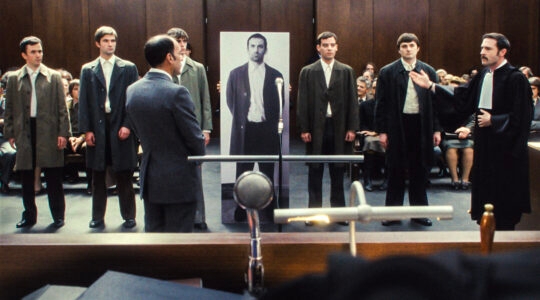JTA recently published several stories about conversion to Judaism in the United States. But in JTA’s first few decades, conversion from Judaism was a more frequent occurrence, particularly in Europe.
In a 1926 article, JTA reported on the exodus of some 20,000 Hungarian Jews since the end of World War I, describing it as a “conversion epidemic” and “cause of grave concern to Jewish leaders…”
The word “epidemic” was again used to describe a spate of conversions in 1931 — this time in Poland, where “the growing economic distress is leading to an alarming wave of suicides and baptisms among Polish Jewry.” Christian missionaries, JTA reported, were exploiting the serious economic crisis by setting up shop in Jewish towns, particularly Vilna. Citing an appeal from a group called the Society for the Protection of the Jewish Faith, JTA wrote:
Thousands of impoverished Jews, waging a desperate fight against starvation and losing all hope of any improvement, are committing the terrible action of taking their own lives, while others are allowing themselves to be ensnared by the soul-snatchers.
Nine years later, JTA yet again reported on an “epidemic of conversions”: 5,500 Jews in Italy “have either been converted or have withdrawn from the Jewish Community, which is a preliminary step to conversion. This figure represents 18 percent of the total Jewish population in Italy.”
The Italian conversion wave was attributed to the country’s new racial laws, “international developments” (presumably meaning Hitler’s rapid conquest of Europe) and “the desire of those seeing no other possibilities to secure the protection of the Church.” Whether converting would exempt Jews from racial laws was unclear, however:
… the Vatican has not yet succeeded in persuading Fascism to recognize the Church creed of brotherhood in Catholicism despite racial origin. This is still a point of major divergence between the Church and the State.
One result of the situation is that a number of full-blooded Jewish Catholics are considered “Aryans” while members of their families are regarded under the laws as Jews.
One of the racial decrees specifies that “Aryanization” may be achieved by proving illegitimacy as a consequence of a mother’s relations with an “Aryan.” Since no one wants to reflect against his mother’s morality, there have been many cases of unearthing transgressions on the part of long-buried grandmothers.
But one European convert from Judaism was singled out for press coverage: Hans Herzl, the son of political Zionism founder Theodor Herzl.
Herzl, whose father famously refused to have him circumcised, became a Baptist in 1924 and went on to convert to Catholicism. His spiritual search until his death, from suicide, in at age 40. In 1930, soon after the young Herzl’s death, JTA printed a “hitherto unpublished statement to the Jewish Telegraphic Agency” that he had sent on April 20, 1926.
“I belong to no church and discount all creeds. I cannot be a member of a synagogue. It denies the messiahship of Jesus which to me is an indisputable historical fact. I cannot adhere to any Christian church since I do not hold that Jesus was God. My faith I would therefore call nationalism.”

Help ensure Jewish news remains accessible to all. Your donation to the Jewish Telegraphic Agency powers the trusted journalism that has connected Jewish communities worldwide for more than 100 years. With your help, JTA can continue to deliver vital news and insights. Donate today.





